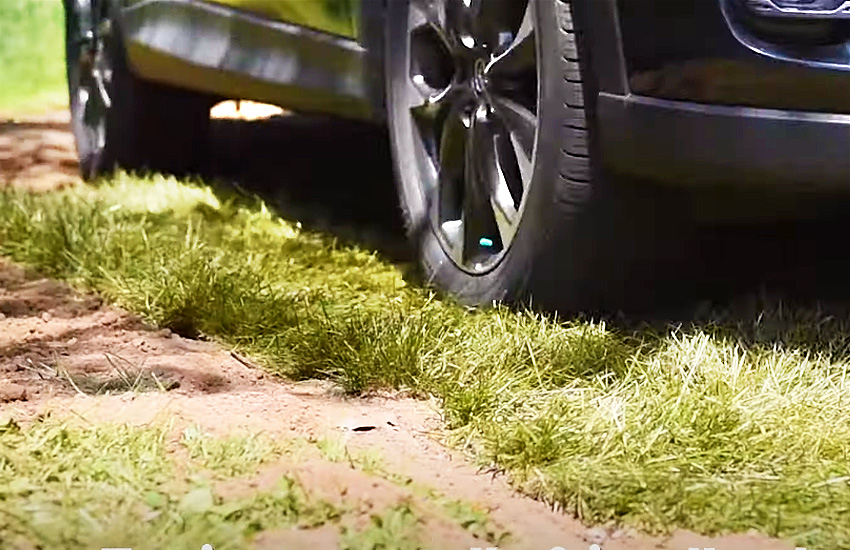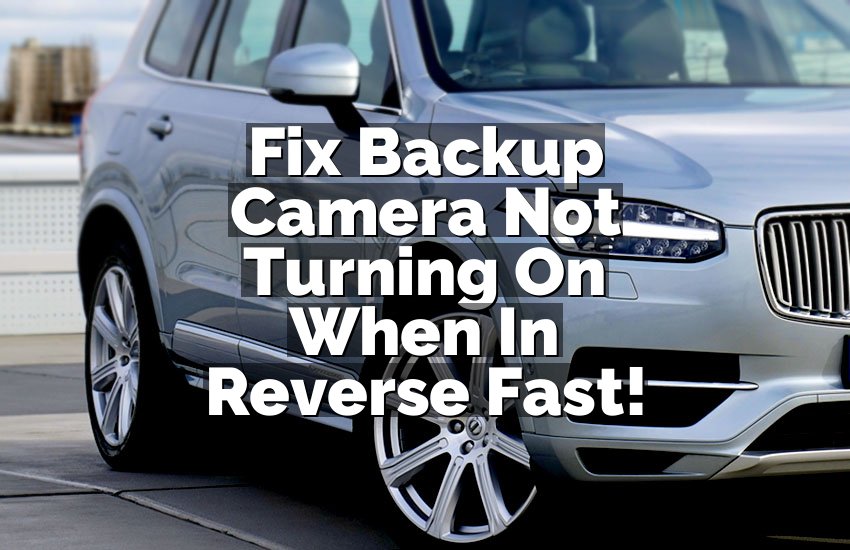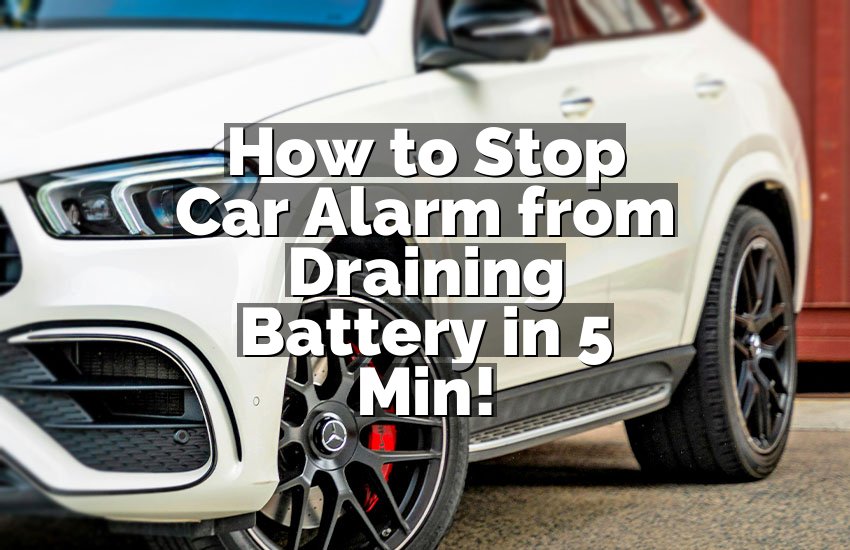Parking on grass can lead to car rust and damage the grass. It’s essential to be aware of the impact on both the car and the grass when considering parking on grass.
This article will discuss the potential consequences of parking on grass, including car rust and damage to the grass, and provide tips for preventing these issues. By understanding the potential risks, you can make informed decisions about where to park your car and ensure both your vehicle and the grass remain in good condition.
Whether you’re considering parking in your own yard or at an outdoor event, being mindful of the impact can help you avoid unnecessary damage.

The Impact Of Parking On Grass
Parking on grass can have various negative effects, not only on the grass itself but also on your car. The weight of the car, coupled with the exposure to moisture, can result in damage to both the grass and the undercarriage of the vehicle. In this section, we will explore the consequences of parking on grass, with a specific focus on the causes of car rust.
Understanding the Problem
Parking on grass may seem like a convenient option, especially when there’s limited space available. However, it can lead to several issues that can be costly to fix. The main problem with parking on grass is the damage caused to the grass itself. The weight of the car, over time, compresses the soil, making it difficult for the grass to grow and thrive.
Causes of Car Rust
When parking on grass, the moisture present in the soil can seep into the undercarriage of your car. This can lead to the formation of rust, which can be detrimental to the overall condition and longevity of your vehicle. Rust is formed when metal comes into contact with water and oxygen, causing a chemical reaction that weakens the structure of the metal.
Parking on grass increases the risk of rust formation due to the constant exposure to moisture. Additionally, grass can also retain water, especially after rainfall, creating a damp environment that accelerates the corrosion process. Rust can spread quickly if not addressed promptly, leading to costly repairs and potential safety concerns.
Moreover, parking on uneven grass surfaces can also cause stress on the undercarriage and suspension of your car. This can result in misalignment or damage to these components, affecting the overall performance and safety of your vehicle.
To prevent car rust and other problems associated with parking on grass, it is important to consider alternative parking options, such as designated parking areas or driveways. If grass parking is unavoidable, taking preventive measures like laying down gravel or using parking mats can help minimize the impact on both the grass and your car.
Factors Contributing to Car Rust
One of the main concerns when parking on grass is the potential for car rust. Rust not only affects the appearance of your vehicle but can also lead to costly repairs if left untreated.
To help you understand the factors contributing to car rust when parking on grass, let’s explore two key elements: exposure to moisture and chemicals and debris in the parking environment.
Exposure to Moisture
When your car is parked on grass, it increases the risk of moisture accumulation, leading to the formation of rust. Moisture can seep into crevices and small openings in your car’s bodywork, especially if the grass is wet or if there are puddles around.
Once moisture finds its way in, it creates the perfect environment for rust to develop and spread. Rainy weather conditions also contribute to moisture buildup on the grass, heightening the risk of rust formation.
Chemicals and Debris in Parking Environment
Apart from moisture, chemicals and debris present in the parking environment can also accelerate the corrosion process. Grass can contain substances like fertilizers, pesticides, and even animal waste, all of which have the potential to corrode the metal surface of your car.
Additionally, debris such as leaves, twigs, and dirt can accumulate on your vehicle’s undercarriage, providing a breeding ground for rust-causing elements. These factors, when combined, increase the likelihood of rust formation and can significantly impact the longevity of your car.
To summarize, exposure to moisture and the presence of chemicals and debris are two significant factors contributing to car rust when parking on grass. It’s crucial to be aware of these risks to prevent damage to your vehicle and preserve its lifespan.
Instead of parking on grass, consider utilizing designated parking areas to minimize the chances of rust formation and maintain your car’s condition for years to come.
Consequences Of Car Rust
Structural Damage To The Vehicle
Rust on a vehicle’s body can lead to structural weaknesses, compromising the overall stability and safety. The corrosion weakens the metal, potentially causing safety hazards and increasing the risk of accidents.
Lower Resale Value
Rust significantly reduces the resale value of a car. Prospective buyers are often deterred by the sight of rust, as they associate it with underlying mechanical issues and prolonged maintenance costs. This can result in a substantial decrease in the vehicle’s market price.
Effects Of Parking On Grass
Parking on grass can have several negative effects, not only on the grass itself but also on the soil underneath. Understanding these effects is crucial for maintaining healthy grass and preventing potential damage to your property.
Compacted Soil And Reduced Drainage
When vehicles are parked on grass, the weight and pressure cause the soil to become compacted. This compression reduces the pore spaces in the soil, leading to reduced drainage and increased surface water runoff. As a result, the grass roots may struggle to access water and nutrients, affecting their overall health and growth.
Damage To Grass Roots
Continual parking on grass can cause damage to the delicate grass roots. The pressure from vehicle tires can crush or tear the roots, inhibiting their ability to uptake essential nutrients from the soil. This can lead to stunted growth, yellowing, and even death of the grass in heavily impacted areas.
Solutions For Parking On Grass
Parking on grass can be a convenient solution when you have limited space or need to accommodate extra vehicles. However, it can also lead to two main problems: car rust and impact on grass.
The good news is that there are solutions available to mitigate these issues. Below, we explore two effective solutions for parking on grass: using parking mats or grass reinforcement products, and creating proper drainage.
Using Parking Mats Or Grass Reinforcement Products
Parking mats or grass reinforcement products are a great way to protect the grass from the heavy weight of vehicles and prevent their impact. These products are made from durable materials that can withstand the pressure of cars and other vehicles, while still allowing the grass to grow underneath.
Here are some key benefits of using parking mats or grass reinforcement products:
- Distribution of weight: Parking mats distribute the weight of vehicles evenly, reducing the chances of damage to the grass. This not only helps to preserve the aesthetic appeal of your lawn but also prevents soil compaction.
- Easy installation: These products are designed for quick and easy installation. They can be easily laid on the grass, creating a stable surface for parking immediately.
- Long-lasting: Parking mats or grass reinforcement products are built to withstand harsh weather conditions and heavy traffic. They are durable and can last for many years, providing a reliable parking solution.
Creating Proper Drainage
Proper drainage is crucial to prevent waterlogging and maintain the health of your grass when parking on it. Excessive moisture can lead to the development of unsightly mud patches, which can kill the grass and make it difficult to park vehicles securely. Here are a few strategies to ensure proper drainage:
- Gravel or stone beds: By creating a gravel or stone bed under the parking area, you can allow water to seep through easily, preventing waterlogging. This helps to maintain the integrity of the grass and ensures a solid parking foundation.
- French drains: Installing French drains helps redirect excess water away from the parking area, preventing it from accumulating and causing damage to the grass. It is an effective solution for areas with heavy rainfall.
- Gutter systems: If your parking area is adjacent to a building or roof, directing the rainwater through gutter systems away from the grass can help prevent waterlogging and potential damage.
By implementing these strategies, you can ensure that parking on grass does not negatively impact your lawn or cause car rust. Whether you choose to use parking mats or grass reinforcement products or focus on creating proper drainage, these solutions will help you maintain a healthy and visually appealing outdoor space.
Promoting Sustainable Parking Practices
Parking on grass can lead to car rust and damage to the grass. Promoting sustainable parking practices helps protect both vehicles and the environment.
Encouraging Alternative Parking Solutions
One of the steps towards promoting sustainable parking practices is to encourage the adoption of alternative parking solutions. This involves exploring and implementing innovative ideas that minimize both the environmental impact and potential damage to grassy areas.
Instead of parking vehicles directly on grass, individuals can consider the following alternatives:
- Utilizing designated parking areas or parking lots when available.
- Using parking pads or permeable surfaces specifically designed for parking.
- Exploring the option of constructing gravel driveways or installing grass pavers that allow vehicles to park without causing excessive damage to grass.
- Considering the use of carports or awnings to provide shade and protect vehicles from the elements, reducing the need for parking on grassy areas.
Raising Awareness and Education
Raising awareness and educating individuals about the potential consequences of parking on grass is crucial to promoting sustainable parking practices. By understanding the impact that vehicles can have on grass and the environment, people can make informed decisions and take necessary precautions.
Some initiatives that can be undertaken include:
- Organizing community workshops and seminars to educate residents about the harmful effects of parking on grass and the importance of sustainable parking practices.
- Implementing signage or informational boards near grassy areas, highlighting the potential damage caused by parking and suggesting alternative parking solutions.
- Collaborating with local authorities or environmental organizations to develop educational campaigns that raise awareness about the negative effects of parking on grass.
- Providing resources such as brochures or online materials that offer guidance on sustainable parking practices and alternative solutions.
Parking on grass can have serious consequences for both your car and the grass underneath. The weight of the car can cause the grass to become compacted, leading to inadequate oxygenation and drainage. This can result in the grass dying and being replaced by unsightly bare patches.
Furthermore, parking on grass increases the risk of your car developing rust, as the moisture from the ground can seep into the underside of your vehicle. To preserve the health of your grass and prevent car rust, it is best to avoid parking on grass whenever possible.
Instead, opt for a proper parking spot or driveway. By doing so, you’ll maintain a beautiful lawn and protect your car from potential damage.


